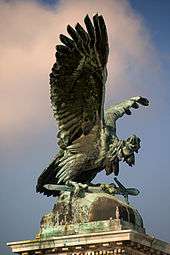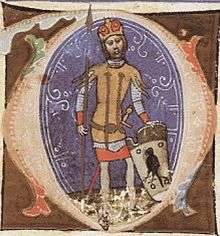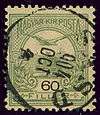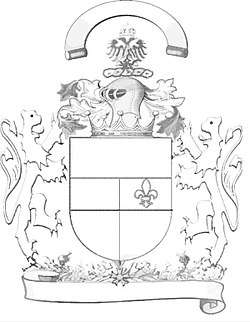Turul

The Turul is a mythological bird of prey, mostly depicted as a hawk or falcon, in Hungarian tradition and a national symbol of modern Hungary and Transylvania (now part of Romania).
Origin

The Turul is probably based on a large falcon, and the origin of the word is most likely Turkic: togrıl or turgul means a medium to large bird of prey of the family Accipitridae, goshawk or red kite.[1] In Hungarian the word sólyom means falcon, and there are three ancient words describing different kinds of falcons: kerecsen [Greek κερχνηίς] (saker falcon), zongor [Turkish sungur = gyrfalcon] (which survives in the male name Zsombor) and turul.
In Hungarian tradition, it presumably originated as the clan symbol used in the 9th and 10th centuries by the ruling House of Arpad. [2]
In the legend of Emese, recorded in the Gesta Hungarorum and the Chronicon Pictum, the turul is mentioned as occurring in a dream of Emese, when she was already pregnant.[3] In older literature, this was interpreted as "impregnation", but the text is clear.[4] the Turul's role is one of a protector spirit, that protects the little baby Álmos, from harm. In a second dream by the leader of the Hungarian tribes, in which eagles (the emblem of the Pechenegs) attacked their horses and a Turul came and saved them.
Modern use

The Turul is used as in the design of coats of arms of the Hungarian Army, the Counter Terrorism Centre and the Office of National Security.[5][6]
There were 3 large Turul statues, each with a wingspan of 15 metres, in Greater Hungary (before the country had its borders reconfigured by the Treaty of Trianon). The last of the three stands on a mountain near Tatabánya, Hungary, but the other two were destroyed. It is the largest bird statue in Europe, and the largest bronze statue in Central Europe.[7] There remain at least 195 Turul statues in Hungary, as well as 48 in Romania (32 in Transylvania and 16 in Partium), 8 in Slovakia, 7 in Serbia, 5 in Ukraine, 1 in Austria. One of the most recently erected, as of 29 September 2012, on St. Michael the Archangel's Day, is in Hungary's Ópusztaszer National Heritage Park.[8]
Some of the Kingdom of Hungary postage stamps issued after 1900 feature the Turul.
See also
References
- ↑ "Great Turkish Dictionary". Turkish Language Association. Archived from the original on 15 July 2012. Retrieved 1 August 2009.
- ↑ Chronicon Pictum, Gesta Hungarorum. Arnold Ipolyi, "Magyar mitológia" (Hungarian Mythology) 1854; Gáspár Heltai, Hungarian Mythology. "[...] the hawk or turul, which in shamanistic lore rested upon the tree of life connecting the earth with the netherworld and the skies, persevered for longer [than other clan totems] as a device belonging to the ruling house. But even this was soon eclipsed by the symbol of the double cros and, around 1200, by the striped shield coloured in the ed and white of Christ's Passion." Martyn C. Rady, Nobility, land and service in medieval Hungary, Palgrave Macmillan, 2000, p.12
- ↑ "Magyar Néprajzi Lexikon: Emese". mek.oszk.hu. Retrieved 1 June 2014.
- ↑ For further details: Szabados, György. "Attila-ős, a sólyomforma madár és a fehér elefánt" (PDF) (in Hungarian). Hungarian Academy of Sciences, History Department.
- ↑ Tom Warhol, Birdwatcher's Daily Companion: 365 Days of Advice, Insight, and Information for Enthusiastic Birders, Marcus Schneck, Quarry Books, 2010, p. 158
- ↑ István Dienes, The Hungarians cross the Carpathians, Corvina Press, 1972, p. 71
- ↑ "Server Error". info.worldbank.org.
- ↑ "Orbán: Új törvények világa közeledik". index.hu.
External links

- Hungarian Mythology - The origin of the mythical bird, and its connection to the hun culture (in English)
